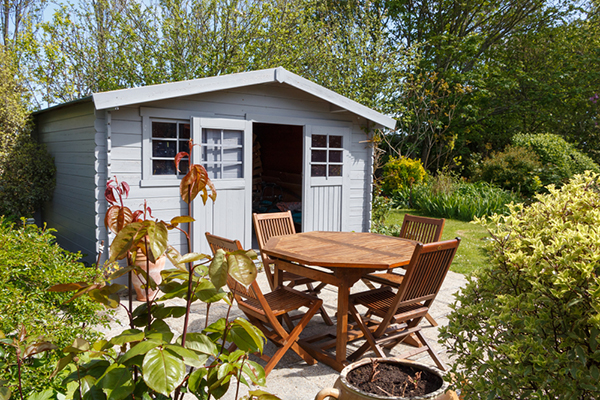Shed Roofing Options for Homeowners
Author: Heidi J. Ellsworth | October 25, 2023
Whether it's a preexisting shed that needs a face-lift or a new addition for added storage, the roof is essential to shed projects. Taking the time to think about how to best protect the shed's contents, whether it's spare flower pots, a lawnmower or something more valuable, is crucial.

As you decide among shed roofing options and debate whether to do it yourself or hire a roofing contractor to roof or re-roof your shed, here are a few important considerations.
The Basics: Waterproofing and Underlayment
No matter what material you choose for your shed roof, it needs to be waterproof. This may seem obvious, but when looking at cost, it's an easy factor to forget. Without a strong roofing system, water and other elements can pass through over time, causing damage to whatever's inside. Make your roof watertight, and be sure the materials can handle anything your local climate may dish out.
The first layer of underlayment can make all the difference. For homeowners in northern climates, covering the roofing with a peel-and-stick underlayment will provide a watertight barrier. Peel-and-stick products can be more expensive, but you will know your roof is safe. In warmer climates, a lightweight synthetic underlayment can offer a moisture barrier that strengthens the entire roofing system.
Options for a Flat Shed Roof
Choosing a shed roof depends on the slope of the roof, since different slopes require different types of roofing. The slope tells you how many inches the roof rises vertically for every foot it runs horizontally. The roof slope will influence the materials you choose to waterproof the shed.
Flat roofs, which are below a 2:12 slope, need specific roofing systems to prevent leaks. Water on a flat roof isn't encouraged to drain off. Instead, it can pond, or sit in puddles. If the water cannot drain, there's a greater chance it will leak inside and cause structural stress to the shed.
One flat shed roofing option is rolled roofing. Rolled roofing comes in options that are self-adhered, torch-applied or nailed down. Self-adhered rolled roofing is usually the more cost-effective solution, and it doesn't require underlayment (or a welding rig). And, even though you usually won't see much of a flat roof from the ground anyway, rolled roofing comes in patterns that emulate other roofing materials and architectural styles.
For low slope roofs of a 3:12 to 5:12 slope, the most cost-effective shed roofing usually ends up being asphalt shingles with an underlayment. This pitch allows the building to shed water more easily while offering a wider variety of colors and aesthetic options.
Steep Slope Shed Roofing Options
For a steeper slope of 6:12 and up, your options for products expand quite a bit: Asphalt shingles, metal, clay tiles, wood shakes and polymeric tiles are all possibilities. Your final choice depends on your aesthetic preferences, especially if the shed needs to match a home or other structures. Check local building codes and homeowners' association codes to confirm that the products and systems you like are appropriate for your region. Local roofing distributors often offer information on roofing products for homeowners.
Take the time to research your shed roofing options. It's always advisable to talk to a trained roofing contractor about helping with the project to make sure it looks great and stays strong and watertight.